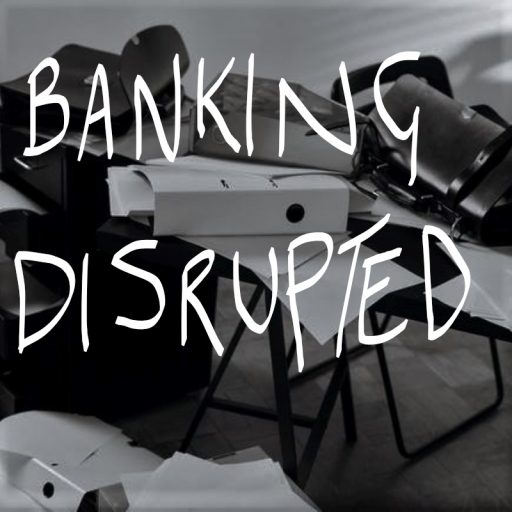There are so many individuals that are self-appointed experts in Artificial Intelligence (AI), Kai-Fu Lee is not one of those. He is recognised as perhaps the leading authority, and sounding board on AI, coupled with an in-depth understanding of the Chinese market, he can offer pointed and valuable insights around both. In his book AI Super-Powers he explores and explains, how China has caught up to the US in the AI space, which is something that was never expected or anticipated. Several implications, trends and technology insights are explored that help show how the world of AI has shaped up over the last few years.
As the world becomes increasingly drawn to more automation, more autonomous working, driver-less cars, assisted servicing and applications of AI technology growing daily, it becomes necessary to understand the possibility of an AI-first economy. The implications of this are far reaching, covering the future of work, impacts on society and environmental factors, so we must pay attention to how this application of technology can provide benefits, whilst acknowledging the challenges. Lee examines the viability of China over taking Silicon Valley in the march to drive the most significant innovation in this area. Several examples across the world of business, are used to illustrate how the Chinese approach of replication, improvement and industrialisation could become a thorn in the side of more established operators across countries like the US.
Big Messages/Key Quotes:
- From school children to global CEO’s, the question comes up with a much higher rate than any other consideration…what are the implications of AI? Will teachers be human going forward? What jobs will be done by people versus AI? These questions have been asked for many decades, but since the advent of deep learning, these questions are becoming more essential to understanding the impact on our workplace and hence economy
- The growing interest in the field of AI has also sparked China’s success, with it now being regarded as an AI super-power as it takes over the US, stealing ground at a spectacular rate. These efforts have given rise to new business models that propel industry growth through innovation, and this is set to revolutionise its economy
- Deep learning (one of the elements under Machine Learning) has perhaps been the catalyst for this acceleration in AI experimentation. The concept has been around since the 50’s and the objective of Deep Learning is to “create human intelligence in a machine”. This clear and concise aim therefore attracted some of the best minds in the world, Marvin Minsky, John McCarthy and Herbert Simon. When work commenced in the 80’s, there were two distinct fields being progressed; rule-based (programme one rule at a time) and neutral networks (let the machine learn through experience)
- As neutral networks need a lot of data to enable experiential learning, it wasn’t until the 2000’s when processing power became available to manage the data sets and algorithms, the real progress was made and neutral became known as Deep Learning and the AI economy started to establish more widely
- For China, the real moment that Deep Learning took hold, came from a famous game of Go. AlphaGo, making light work of beating masters like Ke Jie and the Korean player Lee Sedol. The Lee Sedol tournament was distressful for the hundreds of millions watching the event, as the closer he came to defeat the more visible upset he became. The Chinese, however, do something incredible in this moment, instead of being in uproar, they declared their own ambition to become the leading AI innovator in the next ten years
- China’s first chapter of becoming world leading in the AI wars, was to mimic and recreate everything that was viable to replicate coming out of Silicon Valley. This was deemed to be a very necessary step in their learning, so that they could truncate the learning curve quickly, and then leapfrog the US. The Valley deemed this strategy as nothing short of shameless. Many examples orchestrated by Wang Xing, the copycat entrepreneur, are shared including his pixel-by-pixel copying of Facebook. Despite this bad press, Wang developed and launched his own equivalent of Groupon for the Chinese market, Meituan, which over time took over the market capitalisation of Groupon. Success here was based on using Groupon as a baseline, but then highly customising for the Chinese market, and adding new offerings over time
- “The Saudi Arabia of Data” – one of the core differences between the US and China in using AI to fuel new business models, is data. China is far more open to the “grunt work” involved in organising, managing, and leveraging data, which is the foundation of any great AI work.
“by immersing themselves in the messy details of food delivery, car repairs, shared bikes, and purchases at the corner store, these companies are turning China into the Saudi Arabia of data: a country that suddenly finds itself sitting atop stockpiles of the key resource that powers this technology era. China has already vaulted far ahead of the United States as the world’s largest producer of digital data, and that gap that is widening by the day”
- The availability of data combined with high-touch business models make replication a much harder task for competitors. The way in which services are layered, combined, and integrated as whole ecosystems, makes the task a lot harder than if the business were just a monoline. The system over time generates more contextual data which allows the underlying business model to expand further again. A great example of this in action is WeChat, which was launched in 2011 by Tencent. Tencent already had millions of customers across its two platforms: QQ instant messaging and the Q-Zone social network. If ever there was a global disruption in the making here it was…particularly with the launch of the WeChat Wallet in 2014…suddenly the holy trinity of eCommerce was completed connecting, awareness and transacting. Suddenly as well as “chatting” consumers could order food, prescriptions, and many other items
- AI is categorised over 4 distinct waves, and this is a good way of categorising the use cases that can be grouped under each phase, as well as showing the development of the technology over time. The evolution of AI is not so much big bang but is set to evolve, and further penetrate our daily lives
- First Wave: Internet AI – This is best categorised as recommendations, e.g. because you read this/watch this/listened to this, you may also be interest in this. This is typically seen with online providers like Amazon and YouTube, and become mainstream around 2012. Here the system works because as users browse; data becomes labelled
- Second Wave: Business AI – This covers the enormous volume of data currently sitting across banks and insurance companies. Data on creditworthiness, fraud, bad debt, claims, accidents etc. Here data is labelled in a business context, and algorithms developed based on this information help power analytical tools that can be used for managing portfolios, or overall business performance. In this category the US is leading the way on how to use AI for things like AI advisory, Personal Financial Management and Business Financial Management, and this is based on running better record keeping processes in comparison to China. The gap is being narrowed as China pushes the behavioural agenda for granting loans e.g. time to answer questions, battery life, and trying to analyse correlations across less conventional attributes
- Third Wave: Perception AI – “before AI, all machines were deaf and blind”. Machines where not able to decipher digital images, or uploaded e-content, its was just a series of 1’s and 0’s containing no contextual information. With the advent of AI all of this changed, as the data could be looked at as a series of groupings in order to identify objects, i.e. a collection of pixels represent a golden retriever, traffic lights etc. Here the ability to use facial and voice recognition are becoming more and more mainstream, especially in the context of Smart Homes. Additionally, use cases for this wave of AI are entering into the realms of shopping, education, and so on
- Fourth Wave: Autonomous AI – The fourth wave is an integrated view of the preceding 3 waves and adding in more human-centric intelligence into the mix. This wave charts the progress made as AI determines which strawberries to pick based on ripeness, or the work being done by Google and Telsa on the infrastructure needed for driverless cars. Even though the US is paving the way for Autonomous AI, China is also investing heavily in this space, and we expect the innovation gap to decrease over time
- As AI comes more on-stream, particularly in the workplace, broader debates on the AI economy are being had across the economist community. Currently, the perspective of the AI economy falls into camps: Utopians and Dystopians
- Utopians – here the belief is that the progression of technology supports the broader evolution of human beings. Supporting and driving higher potential in human potential, as well as improving biological well-being, possibly resulting in longer life expectancy
- Dystopians on the contrary believe that such evolution of AI can harm our society and jeopardize our survival if the technology is not used responsibility. The thinking here is that checks and balances are required and that power is not devolved to machine, without a broader understanding of the implications
- In a broader economic sense, it is widely accepted that AI can help drive cost optimisation across organisations, with the ability to automate repetitive, homogenous, and high-volume tasks. The debate around whether AI could replace some jobs in their entirety is still being debated. There is no doubt that automation can make the jobs of advisors, bankers, lawyers, and tax consultants a lot easier, as the need for nuanced client conversation still exists. Hence, there cannot be a one-dimensional view for the way in which AI is thought about, when it comes to the replacement of labour, whether that be Cognitive or Physical Labour. Many studies undertaken by the OECD, PwC, and McKinsey also do not show a consistent view on AI impacts on labour, with each predicting 9%, 38% and 50% of jobs being at risk from automation
- The Wisdom of Cancer – in 2013 the author, Kai-Fu Lee, was diagnosed with cancer, but this is in remission. He shares how the diagnosis made him rethink a number of fundamental elements in his life; being a workaholic and assessing what it means to be human in the context of personal relationships. He shares some very personal insights, that seem to remind us all that we ought to review whether we “live for work”, or “work to live” on a regular basis
- Parting Comments – AI set to become a significant industry sector. But maybe the most significant upside, is that more attention is diverted to more human-to-human interactions, which helps to improve society and how we care for one another…and that cannot be a bad by-product of embracing the AI economy
Why read this book?
This book is written for anyone looking to improve their understanding of AI the technology, understand its application and to comprehend some of the implications of widespread adoption. Peppered with great business examples, and research, this is an absolute must read for anyone interested in this field.




